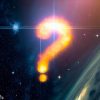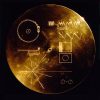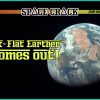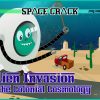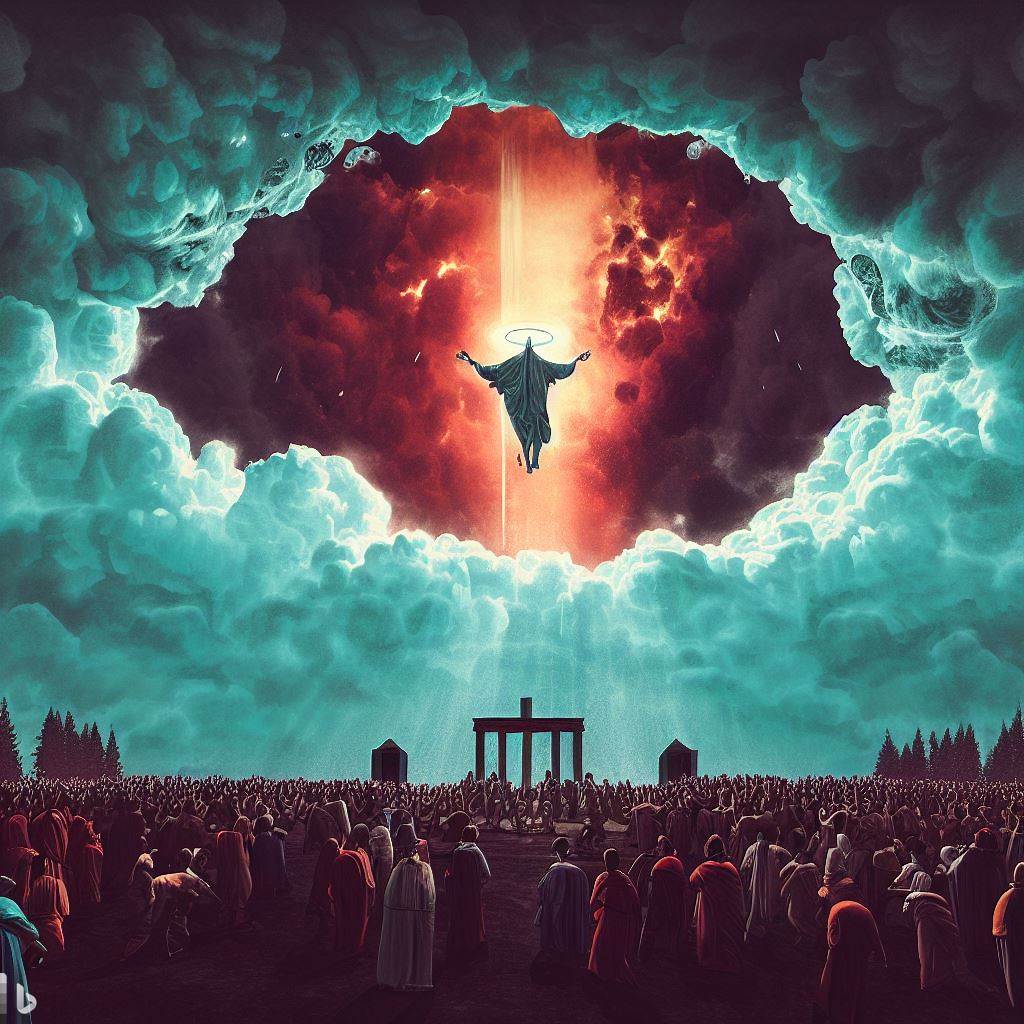
POST-CURVATURE TECHNOLOGY
The debate over the shape of the Earth has ignited discussions and controversies recently and over centuries. And the questions this investigation raises will not go away anytime soon. In the age of video sharing and streaming platforms, the once-static discourse surrounding Earth’s cosmology has been revitalized. The assertion that the Earth is not a spinning ball has surged to the forefront, propelled by the accessibility of cameras, such as the Nikon P-900 and P-1000, capable of capturing the environment in unprecedented detail, showing that the curvature of the colonial globe is but a mirage. Astonishingly, we can perceive objects and landscapes that should remain hidden beyond the curvature—a discord between expected theory and observable reality that casts doubt upon the veracity of the prevailing colonial, State-sponsored narrative of space exploration.
This technological leap has enabled individuals to share their observations, igniting a wave of questioning that challenges the established narrative of the colonial cosmology. Before, people just believed the colonial storyline they learned in school and were deprived of any means of testing its assertions. These cosmological storylines were imposed based on the alleged authority of prominent figures in the construction of mainstream western science. However, things heated up when people realized that many notions they had unwittingly absorbed were demonstrably untrue.
Eventually, the increased popularity of these alternative viewpoints led to concerted efforts to stigmatize, censor, misrepresent and humiliate dissenting voices instead of dealing with the empirical challenges they posed. One such example is the film Behind the Curve, which I have analyzed in 3 videos.
FRAGILITY AND THE POWER OF FICTION
A barrage of State propaganda has accompanied this theme on mainstream media channels, a fact which highlights how fragile the foundations of the colonial cosmology really are. For instance, the globe, the Lunar Landings, and human space exploration in general are fantasies that are quite easy to disprove with independent research. This empirical clarity can eventually lead to another issue, because, in essence, people find ways to settle for fiction, the main subject of my book In Fiction We Trust: Critical Explorations on Colonial Cosmology. People who realize that the colonial cosmology’s main symbol, the globe, is not based on reality, which is elementary to ascertain, may continue promoting views that they are unable to reflect on critically or scrutinize. Many continue holding notions that are untestable, and arguing for them in a kind of online dramatic theatre, over and over again.
The prevalence of non-sequitur logics and the lack of nuance in argumentation hurts the credibility of the general empirical argument, as the speaker seems to hold different standards of evidence simultaneously. This mixing of contradictory logics can lead to confusion regarding the debate around the nature of the Earth. It can cause neutral skeptics to avoid a serious discussion, fueling the stereotype that anyone questioning the globe’s validity is necessarily a religious fundamentalist.
From this, a paradoxical situation unfolded: the wide circulation of negative stereotypes stigmatizes the issue, driving potential analysts away; in the meantime, serious investigations remain hidden behind a thick veneer of alternative fantasies and unrelated claims that have become attached to the question of the Earth’s true cosmology.
Various other additions and non-sequitur fantasies have become popularized as alternative histories and versions of reality, including the Mandela Effect people, Tartarian architectural speculation, and the merging of alien invasion and abduction lore and New Age propaganda in various storylines. An example of this mixing of logics is the video titled “ANCIENT COSMOLOGY 101, Presented at the ‘Origins Untold: Ancient Cosmology’ Premiere,” featured on the YouTube channel FOUNDED EARTH BROTHERS. You can watch the video below.
Josh makes two claims: that ancient cosmologies do not include a spinning ball, and that we are destined to witness the arrival of Jesus through the firmament. One is testable and the other is not. The two claims are simply based on different standards of evidence. This juxtaposition can be perplexing for people who might consider the critique of the colonial cosmology. With this exercise, we are interested in how these ways of thinking work and how individuals frame their positions.
In the case of Josh’s presentation, it is the mixing of incompatible logics that makes his arguments fascinating from an analytical perspective. ‘How can we truly know what we claim to know?’ Can we realize the distinction between how much of what we take for granted is testable, and how much is fiction?
Josh made many points regarding how colonial assertions about the Earth’s shape have been discredited:
“We test it on the surface and we see researchers time and time again proving that the surface of water does not curve at many great distances. And this is just sight distances. There’s limits to how far we can see because there’s water in the air, but you can see it’s far beyond what it should be. We’ve got world record long-distance photos with three-quarters of a mile of missing hidden target. You shouldn’t be able to see that thing. There should be three-quarters of a mile hiding it, but we see it. Since then, we’ve gone further, forty-five and a half miles. Forty-five and a half miles of missing curve. That is something new that’s popping out, these things are happening all the time. If that’s not enough for the refraction experts, we have Guglielmo Marconi back in 1901. This guy sent a line-of-sight signal, line-of-sight meaning this signal only travels in a straight line, across the entire Atlantic Ocean.”
The colonial cosmological idea that the Earth spins according to the laws of gravity faces challenges on both theoretical and observational fronts. The assertion of Newtonian gravity is undermined by the three-body problem, exposing its lack of correspondence with reality. Moreover, the extent to which distant objects are visible, even with the naked eye, contradicts the notion of Earth’s curvature as proposed by the colonial model.
This discrepancy extends to the portrayal of Earth through historical records such as the Apollo images. These visuals depict an Earth as a pristine circle, in stark contrast to the irregularities proposed by the Geoid model, which presents Earth as a lumpen form reminiscent of a potato. The conventional claim of an oblate spheroid further deepens the contradictions within the colonial model. The unsettling paradox of these contrasting representations prompts us to question the consistency and reliability of the framework being presented.
Compounding this enigma is the portrayal of the South Pole in widely utilized platforms such as Google Earth. This digital mosaic, purporting to represent the pinnacle of satellite imagery, presents a collage that defies the coherence of natural reality. The discrepancy between the celebrated technological capabilities and the perplexing incongruities they produce leaves us pondering the extent of the narrative manipulation at play.
NOAH’S REVENGE
Josh’s presentation takes an intriguing turn when he intertwines the belief in Jesus’s second coming with the narrative of Noah—an honored figure from ancient texts—cast as a “conspiracy theorist” for his preparations against an impending cataclysm.
“Back in the days of Noah, I can imagine this guy was looked at as a conspiracy theorist. There was a common meme going around that, ‘Hey, this guy was a conspiracy theorist until all of his fact checkers drowned.’ This guy sent a line of sight signal—line of sight meaning this signal only travels in a straight line across the entire Atlantic Ocean. Five hundred and four miles of missing curve. After that, we’ve got another one with the same signal. This time, England to Australia. In order for that signal to reach the tower they built, it would have to be over 7,000 miles tall. So maybe elder people know, back in the days of Noah, I can imagine this guy was looked at as a conspiracy theorist. We are preparing for an event for that firmament to open up yet again. We’re looked at as conspiracy theorists, but this time when it opens, it’s not flood. It’s not water. It’s the beloved Son returning. And as tempting as it’s going to be, don’t look at the fact checkers and be like, ‘I told you so.’ You know, we still got to be humble. That’s a big part of this.”
The notion of Jesus’s imminent appears in Matthew 24:30-31, which states: “And then shall appear the sign of the Son of man in heaven: and then shall all the tribes of the earth mourn, and they shall see the Son of man coming in the clouds of heaven with power and great glory.”
In Josh’s interpretation, what the Bible describes as ‘the sign of the Son of man’ has somehow become the Son of God, Jesus. The text is talking about a sign, not an avatar breaking through the firmament’s ceiling. Perhaps that are differences in interpretation and translation, again, pointing to the perennial issue, the abstract nature of written words.
Some groups exploit the anticipation of Jesus’s return to manipulate and control their followers, generating fantastic expectations, fueling imaginations, and generating a mix of affection, fear and uncertainty. The sense of anticipation holds believers in suspension, very much in the same way that space exploration stories give believers the impression that we are at the cusp of interplanetary travel. The tantalizing promises of space exploration come adorned with alleged evidence that struggles under the weight of rigorous examination.
This interplay of contradictions encourages reflection on how the empirical and the intangible are intermingled. How readily do we accept captivating tales, even in the absence of testable substance? How skillfully do we discern between the empirical and the ethereal in our pursuit of understanding?
By linking the credibility of Noah’s foresight with the anticipation of Jesus’s return, Josh constructs a curious argument. He insinuates that if Noah’s narrative gained credence through the deluge, then those expecting Jesus’s reappearance must similarly be validated. In addition, another curious logic unfolds, mixing various points, such as the ability to test the Earth’s shape to show no curvature, the expectation of Jesus’ return, and the idea that stereotyped flat earth ‘conspiracy theorists’ turned out to be right.
Josh’s exploration of ancient cosmologies here shifts into the realm of divine assessment and validation. Either divine endorsement or retribution await for those who contest his position. This shift evokes the formidable impact of belief, appealing to a sense of validation through divine authority, while intimating a form of divine retribution for dissent.
Engaging in this analysis is not an evaluation of anyone’s’ religious convictions. Each person has the right to believe whatever they want. My interest is purely analytical and epistemological, guided by the question, ‘how do we know that we know’? In other words, ‘how do we validate our assertions’?
CONSPIRACY & FUNDAMENTALIST STEREOTYPES
The application of the label “religious fundamentalism” has frequently been directed towards flat earthers, which inadvertently overlooks the rich diversity of historical cosmological frameworks that have never conformed to the colonial globe and its claims.
This stereotype neglects the nuanced and deliberate ways in which ancient and indigenous cultures conceptualized the cosmos. The ancient Hebrew cosmology found in Genesis does not align with the colonial concept of a spinning ball Earth. Various other cosmologies, including shamanic systems, Vedic, Babylonian, Egyptian, and Chinese, have also postulated a non-spherical world and a turning sky dome, firmament, or similar idea. These cosmological systems, developed over millennia of meticulous observation and contemplation, were capable of predicting celestial events with remarkable precision, including eclipses at their specific geographical origins, a testament to the advanced understanding and sophistication of these cultures.
In the endeavor to understand and make sense of the intricate tapestry of natural phenomena, individuals utilize language as a means to articulate their observations, insights, and attempts at comprehension. Whether conveyed through spoken words, symbolic representations, poetry, or even musical compositions, abstraction and representation become vessels through which humans strive to encapsulate the complexities of the natural world. All these expressions are inherently limited by their abstract nature. Language, as a product of human culture, requires the use of metaphors to convey intricate concepts that often elude direct explanation. Developing a conceptual apparatus capable of capturing the nuanced essence of nature has been a perennial aspiration of philosophy, an ongoing journey marked by continuous exploration and questioning. As our understanding deepens, new inquiries arise, further underscoring the ever-expansive nature of this intellectual pursuit.
What remains a challenge to explain is how the colonial cosmology has become so ingrained in the imagination of its believers, making its suppositions seem immune to empirical examination. When we question these premises in public, we often trigger staunch resistance from believers, based on demonstrably fictional lore. This only accentuates the potentially comical nature of the interaction and suggests we should proceed with tact because our objective is no instruct, not humiliate. Yet, the temptation of satire and humor are often irresistible, given how flimsy are the grounds upon which the colonial attempt to escape scrutiny rests.
The intricate interplay between cultural narratives and scientific paradigms raises questions about how deeply embedded frameworks can impact the pursuit of objective truth. Many adherents of the colonial cosmology are often unaware of the origins of the ideas they’ve incorporated, having done so without rigorous scrutiny. This phenomenon emerges from the educational and media systems that shape our conceptions in daily life, subtly imparting specific cosmological messages that are unwittingly absorbed and integrated.
SUPPRESSING COSMOLOGICAL DIVERSITY
One crucial issue that the search for the True Earth faces is the colonial cosmology’s sweeping attempt to eclipse alternative cosmological systems, relegating them to obscurity beneath the banner of science and modernity. Paradoxically, the ease of debunking the globe model with tangible evidence has triggered an intense need for propaganda to suppress counter-narratives. To bury robust research, algorithm controllers amplify flat earthers who also push unsubstantiated claims and spurious assertions, sidelining serious inquiries.
This dynamic contrast in reception is illuminating. On one hand, the stereotype of flat earthers is not only tolerated but often sensationalized within a society primarily dominated by colonial cosmological beliefs. Conversely, numerous ancient cosmologies, such as the intricate Chinese system, are frequently consigned to oblivion, failing to secure significant attention. Could this muted acknowledgment be rooted in the apprehension that delving into ancient cosmologies might validate what the colonial cosmology vehemently seeks to obliterate?
Delving into these cosmological frameworks may inadvertently challenge the Western-centric narrative of superiority, wherein differing perspectives were historically dismissed as primitive or naive. The ultimate irony lies in the tenacity of the colonial globe model. Despite its evident inaccuracies and the mounting body of evidence that calls its validity into question, the model retains a steadfast hold on the minds of space exploration believers.
The question arises: How does this fragile conceptual straitjacket sustain its hold on these individuals? The phenomenon invites a deeper contemplation on the power of narrative, cultural inertia, and the mechanisms through which established beliefs persist even when faced with contradictory evidence.



